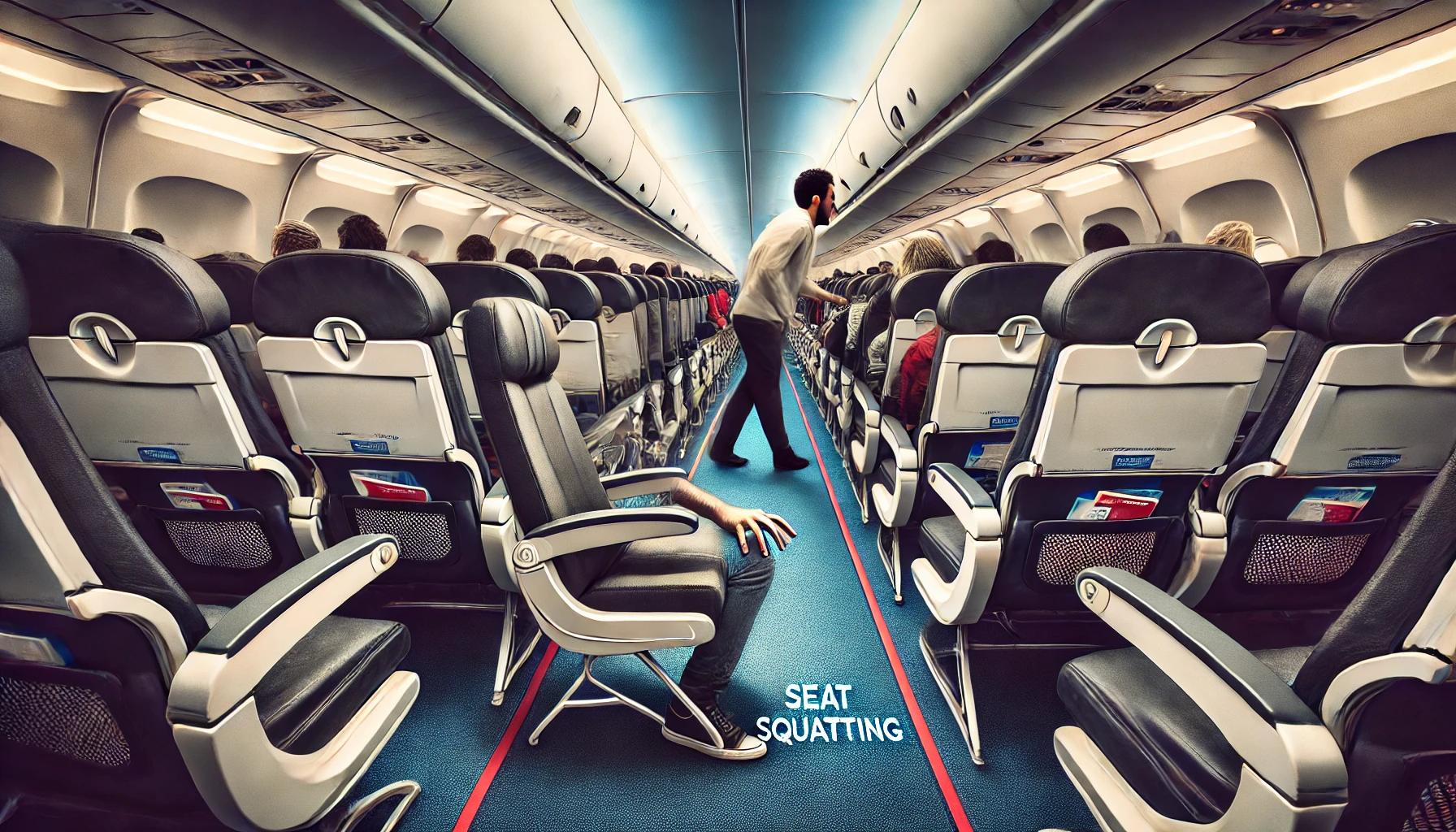Are Seat Squatters the New Trend in Air Travel?
In the modern age of air travel, flyers are increasingly finding themselves caught in a myriad of unwritten rules and etiquette dilemmas. Among these, the phenomenon of seat squatters—passengers who occupy another traveler’s assigned seat hoping for a free upgrade—has stirred considerable discussion. This trend, exacerbated by social media amplification, raises questions about the future of in-flight etiquette.
The Rise of Seat Squatting
Historically, changing seats on a flight was as simple as asking the person seated next to you or consulting with the flight attendants. However, a growing number of travelers are now bypassing these traditional courtesies, opting instead to just sit in a preferred seat unannounced. This behavior is often witnessed during boarding chaos, especially when the cabin crew is too overwhelmed to enforce seating arrangements strictly.
Why is seat squatting becoming more common? A few factors likely contribute to this trend:
- Increasing flight occupancy rates: With flights becoming increasingly full, passengers are looking for ways to increase their comfort, even if that means bending a few rules.
- Lack of enforcement: Cabin crew, often overworked and focused on safety, may not strictly enforce seating assignments, especially during hectic boarding processes.
- Impulse for upgrades: Economic constraints and the high cost of seat upgrades might tempt passengers to seize an opportunity when they see a vacant or seemingly nicer seat.
The Reactions on Social Media
It is no surprise that the digital realm, especially platforms like Twitter and Instagram, has become a hotbed for sharing both grievances and support regarding seat squatters. Many passengers take to social media to vent about their experiences, often posting photos or sharing detailed accounts of their encounters with squatters.
Reactions tend to range widely, from those supporting the creativity and boldness of such squatters to those advocating for strict adherence to rules:
- Pro-seat squatters: Some users admire the audacity of seat squatters, suggesting it’s an unofficial perk of air travel creativity.
- Rule enforcers: Others are strict about maintaining order in the cabin, arguing that seat assignments should be respected to maintain fairness.
The viral nature of these posts often spark debates, with major media outlets picking up particularly contentious exchanges.
Notable Incidents Brought to Light
Several high-profile instances of seat squatters have emerged on social media, some turning into viral sensations. For instance, a passenger recently reported finding someone seated in their paid-for window seat, only to hear, “No harm in asking, right?” This has prompted divided opinions, some feeling empathy towards the squatter’s attempt at comfort, while others stand by the paying customer’s rights.
Airlines’ Stance on Seat Squatting
Airlines have started taking note of this issue, although responses vary:
- Official policies: Major carriers have policies in place to manage seat switching, encouraging passengers to utilize their customer service avenues.
- Flexibility vs. rigidity: While some airlines allow flexibility as long as all parties agree, others remain strict due to the complexities involved with seat allocation and aircraft balance.
Passengers are encouraged to resolve seat conflicts amicably among themselves. If this fails, the cabin crew can assist, though passengers are reminded that paid seat selections, especially in premium areas, are typically non-negotiable.
The Role of Passenger Etiquette
Effective solutions for managing seat disputes often boil down to simple respect and communication:
- Ask before sitting: If a seat appears empty, it is courteous to ask the flight attendant or the seated passenger before relocating.
- Acknowledge the inconvenience: Respect the discomfort it may cause the person who originally selected and possibly paid extra for a specific seat.
Moreover, frequent travelers suggest adopting a polite, open dialogue with fellow passengers and crew to resolve any problems. One user suggested humor as a disarming tactic, sharing their strategy of joking about having “accidentally booked the worst seat” to ease any tension during negotiations for seat swapping.
Practical Tips for Legitimate Seat Upgrades
If you are determined to change your seat, consider these more conventional methods:
- Utilize airline apps: Most modern airline apps allow for easy seat changes before boarding.
- Early check-in: Secure a better seat by checking in as soon as the option becomes available.
- Loyalty rewards: Making the most of frequent flyer programs can sometimes lead to complimentary upgrades.
- Ask politely: Often, politely inquiring about available seats at the gate can yield positive results.
Conclusion: Navigating the Seat Squatter Phenomenon
While seat squatting may have become a buzzworthy topic and an emerging trend, the implications touch not only on the minutiae of air travel etiquette but also on how we navigate social interactions in confined, high-pressure environments. Whether viewed as an audacious attempt at comfort or a breach of travel protocol, the rise of seat squatting challenges passengers to reconsider their approach to sharing common spaces.
As we navigate this evolving landscape, one essential takeaway is clear: courtesy and clear communication remain the cornerstones of a pleasant travel experience, whether you’re a staunch traditionalist or a daring squatter.










